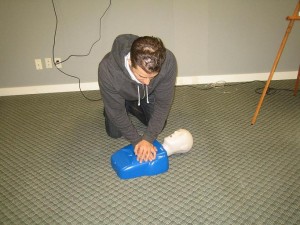Because of the fact that first aid re-certification normally entails paying for another batch of first aid and CPR classes, employers and other certified first aid rescuers often pass on the opportunity to get re-certified. What they do not realize is that getting re-certified is one of the best ways to learn about the new changes or breakthroughs in first aid and CPR which aim to increase the survivability of patients or individuals with little to no complications. Here are some of the aspects of first aid and CPR that are normally revised every five years or so which are being adapted by many first aid and CPR training centers.
Number of Chest Compressions

Considering that chest compressions are one of the most common causes of post-CPR injuries, changes are constantly being made in the number of compressions that should be done in one cycle. These changes are based on the number of compressions that do the least among of damage to the rib cage and other organs or structures in the chest and abdominal area without compromising the efficiency of the compressions.
Choking
Even though the Heimlich maneuver is considered by many medical institutions as a valid and effective medical intervention for choking especially for conscious patients, changes are still being made to increase its efficiency. Researchers often include other steps before performing this maneuver. Some suggest performing five back blows before moving on to this maneuver if the back blows do not work. Back blows are often used in hospitals and other healthcare facilities to elicit coughing response from patients. The Heimlich maneuver is also analyzed in order to find out if it is still the best medical intervention for unconscious patients who are choking.
Rescue breaths
Recent studies show that allowing the chest to fully recoil in between compressions and rescue breaths enables the heart to pump out more blood which is one of the main goals during emergency situations. This is why researchers are always looking for the best ways to administer rescue breaths during CPR which will facilitate full chest recoil.
Medication administration
The scope of the duties and responsibilities of rescuers when it comes to medication administration has been up for much debate and scrutiny for many years. However, it has been determined that first aid rescuers should be taught how to administer emergency medications properly so that they may be of assistance even to those patients who already know how to administer them. By opting for first aid re-certification, rescuers will learn how to assist patients during the administration of medications.
[youtube url=”http://www.youtube.com/watch?v=iTgkGflUTk0″ width=”220″]